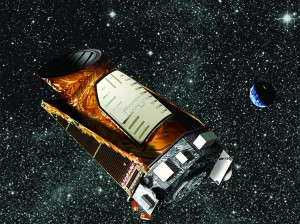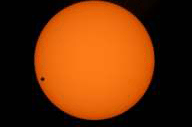New Planetary Neighbors
Wednesday, May 11th, 2016May 11, 2016
Yesterday, May 10, we met over a thousand of Earth’s neighbors for the first time. Princeton University researcher Timothy Morton and a team of other scientists analyzed data returned by the U.S. National Aeronautics and Space Administration (NASA) satellite Kepler and detected over 1,200 more planets orbiting other stars, nearly double the amount previously known. The group announced the discoveries in a NASA press conference and published their results in The Astrophysical Journal.
Kepler is a space-based telescope originally designed to search for Earth-sized planets orbiting sunlike stars. Scientists refer to planets beyond our solar system as extrasolar planets or exoplanets. The telescope watched many stars simultaneously for small changes in brightness that might be caused by a passing planet. Kepler’s main goal was to find small, rocky planets—called terrestrial (Earthlike) planets—that orbit within their star’s habitable zone. In this region, temperatures allow for the existence of liquid water, which many scientists think is essential for life. The mission also helped scientists understand the variety of planetary systems that exist around sunlike stars. Kepler still hunts for planets today, albeit with a modified mission due to hardware failure on the craft.
Morton and his team developed a method to statistically analyze the likelihood that a promising return from Kepler could be caused by something other than an exoplanet, such as another star. If the probability of such a false positive was less than 1 percent, then the team reasoned that the result came from an exoplanet. Rather than use new observations, the team looked at over 4,000 objects of interest previously identified by the telescope. Of those objects, 1,284 were confirmed to be exoplanets (not counting the 984 already confirmed by other methods) and 428 were deemed false positives.
The new method will likely revolutionize the search for exoplanets. Before this study, astronomers have had to manually confirm all promising results returned by Kepler using Earth-based observatories, an expensive, time-consuming process. Now, they can use the Morton team’s method as a first pass, automatically confirming the most likely signals as exoplanets and ruling out the least likely ones. They can then spend their valuable research time on determining whether the trickier signals were caused by orbiting exoplanets.
Of the 1,200 newly discovered exoplanets, over 500 could potentially be rocky planets like Earth and Mars. Of these, nine orbit in their star’s habitable zone. In the future, astronomers will use even more powerful telescopes to study these exoplanets to try to answer one of astronomy’s greatest questions: are we alone in the universe, or is there other life out there?








